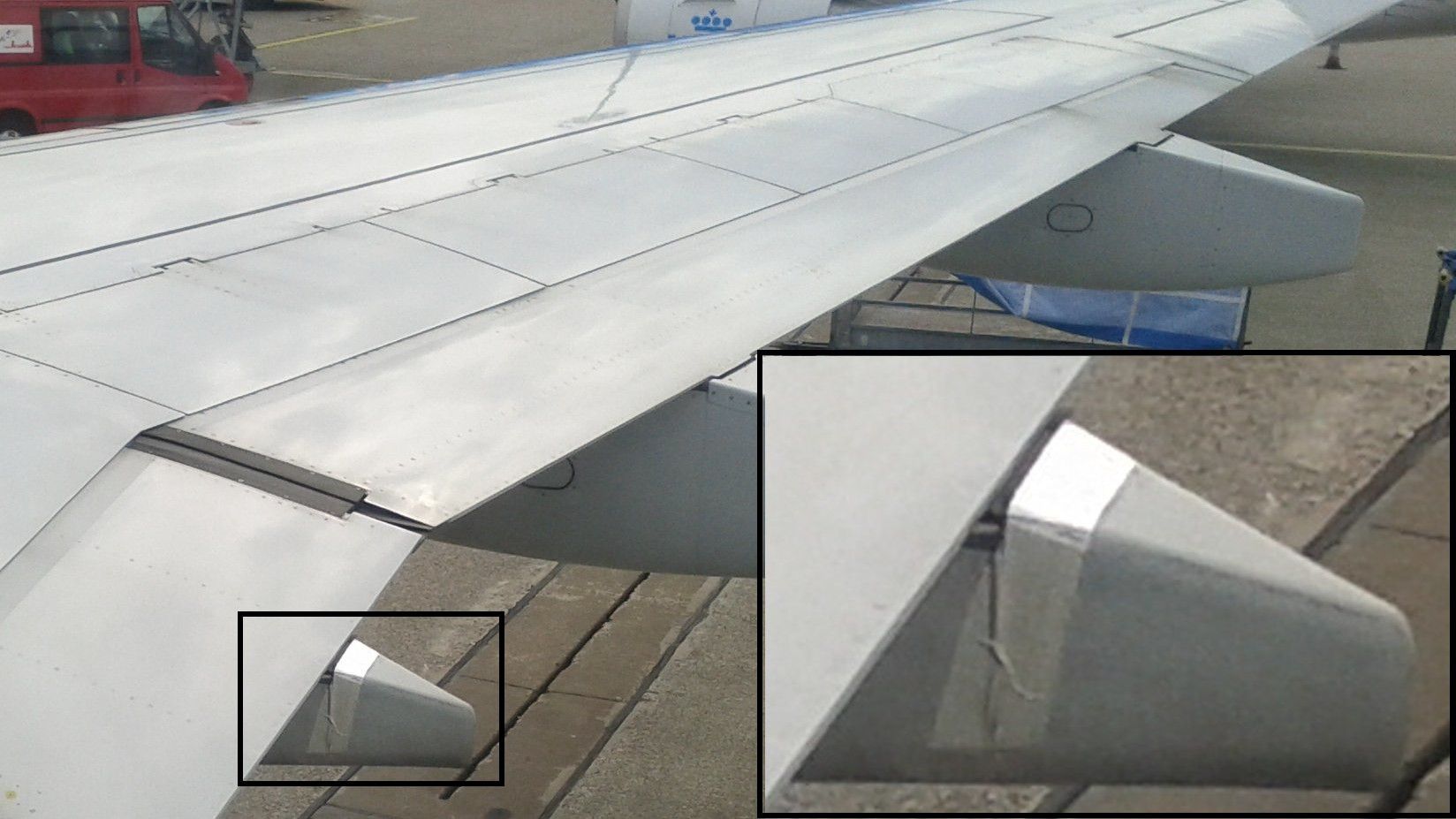Summary
- Speed tape is a durable, adhesive material designed to promote aircraft safety and withstand extreme environments.
- It is used for temporary, minor repairs to certain airplane components.
- Speed tape solves errors that do not affect an aircraft's structure but can impact airflow and aerodynamic performance.
Some believe duct tape can fix everything, but they would be mistaken. Indeed, it has various good uses inside and outside the home, but simple duct tape would not last long against the temperatures, forces, and elements that aircraft of all types experience. So, the industry has found another solution, called speed tape.
What is it, and what exactly is it made to tolerate?
As this material is made primarily from aluminum, which is silverish-grayish in color, one could be forgiven for pondering why it appears duct tape is helping to patch something on an aircraft wing. After all, there are plenty of photos on social media joking about low-cost carriers using duct tape to keep the airframe together. However, people posting this content should know that speed tape is helpful for any operator and that its properties are far beyond what duct tape can do.
According to The Sydney Morning Herald, speed tape is specifically designed to withstand temperatures ranging from -65 to 300 Fahrenheit (-54 to 149 Celsius), wind speeds of around 600 MPH (966 KPH), water, flames, ultraviolet rays, and a myriad of environmental changes. This pressure-sensitive tape is as adhesive as it is durable, though it’s likely not holding together two critical aircraft pieces. Though it is mainly a solution until the plane undergoes more extensive maintenance than just where the tape is placed, there are strict rules governing how carriers can apply it.
A spokesperson for the Federal Aviation Administration (FAA), the United States’ regulatory authority, said this material can be used for “temporary, minor repairs to nonstructural aircraft components.” The same source explains that, in the US, airlines outline how and when they plan to use the tape, and the FAA must approve this document. Case in point, in the early 2000s, the FAA fined United Airlines $805,000 for operating nearly 200 flights with speed tape applied to holes larger than permitted and that were too close to the wing spoilers.
Want answers to more key questions in aviation? Check out the rest of our guides here.
So why would a carrier want to use it?
All said, speed tape is an excellent solution for minor issues or cosmetic errors that would not otherwise cause a critical failure during flight. Perhaps it’s just a case of peeling paint that doesn’t affect the overall aircraft structure, or maybe there’s a minor bump, scratch, or hole that doesn’t force the plane to be stuck on the ground. But such things can interfere with airflow and aerodynamic performance.
Ideally, aircraft surfaces are as flat and smooth as possible to facilitate optimal conditions for flight. Airflow over a pair of wings is critical to achieve flight, and while minor cosmetic damage won’t hinder an aircraft from taking off and cruising, it still can cause minor imperfections in how the air is moving. By using speed tape, these issues can be lessened or mitigated by making the surface flat again, so during routine inspections before a flight, say during a turnaround, it’s possible to see a maintenance worker apply some amount of the adhesive material.
Once the aircraft goes into maintenance as it usually would, the airline will find a more permanent solution for whatever made them want to apply speed tape in the first place. It’s worth mentioning that, given the material’s properties, it has uses outside of aviation, for example, on race cars, where speed, aerodynamics, and extreme elements are also featured.
Sources: Sydney Morning Herald, New York Post

